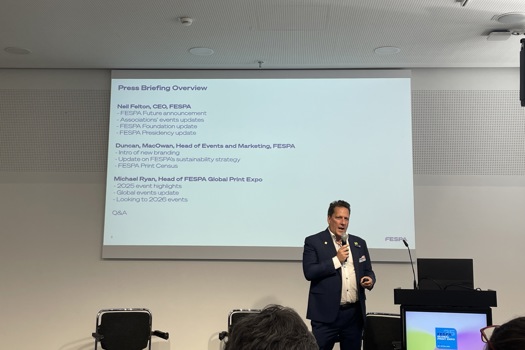Announcing results for the financial year to 30 June 2023, in his traditional letter to shareholders Keane described the post-2015 period as the group’s “corporate adolescence”.
“As is often the case in humans, adolescence at Cimpress was rocky,” he stated.
“In 2015, we centralised large parts of our value chain to drive economies of scale by integrating the fulfilment operations of acquired companies. We soon learned that this killed entrepreneurial vigour and customer proximity, so in 2017 we pivoted to (and still fervently embrace) decentralisation, which we empower through autonomy and accountability.”
The technology platform rebuild that began in 2019 is now complete.
“This has also allowed for easier adoption of centrally developed software services in our Mass Customization Platform (MCP), increasing the value we can achieve by lowering the per-unit cost of technology development and allowing for easier access to the MCP's capabilities in artwork technology, data, fulfilment, product catalog, and e-commerce.”
Keane said the market opportunity remained large, and Cimpress expected to benefit from online market consolidation.
Regarding the potential to take its MCP know-how to new product areas, in a call with investors Keane said it would be a continuation of what the firm had been doing for the past three decades, such as other forms of personalisation and expanding its product options.
“It could be different variations available in terms of finishing, being competitive at multiple different levels of quantities,” he explained.
“We're never going to get into very high volume printing, but expanding up into mid volumes. So it's nothing that would surprise anyone who is familiar with what we've done over the last 30 years.”
Group revenue was up 6.65% to $3.08bn (£2.4bn), while adjusted EBITDA improved to $340m from $281m the prior year.
Vista, the biggest business, grew sales by 6.5% to $1.61bn, while its EBITDA nudged up to $224m (2022: $195m).
The Upload & Print division, which includes Tradeprint in the UK, edged closer to being a $1bn turnover business in itself and posted sales of $925m, up $69m year-on-year. EBITA increased from $125m to $131m.
Cimpress also spent $90.8m buying most of the outstanding non-controlling interests in its PrintBrothers operations in Germany.
National Pen, which was particularly badly hit by the pandemic, posted sales up just 0.7% at $366m, while EBITDA fell by $3m to $24m.
BuildASign sales increased by $5m to $187m while EBITDA slipped from $31m to $28m.
Keane also commented on some of its global markets.
“Last but not least, we made changes where we were destroying shareholder value. For example, we restructured our Brazilian business and recently exited operations in Japan and China.”
He expects the group’s businesses in Brazil and India to be close to break even on an adjusted EBITDA basis in FY2024, and added: “We do not plan on entering other geographies for the foreseeable future.”










